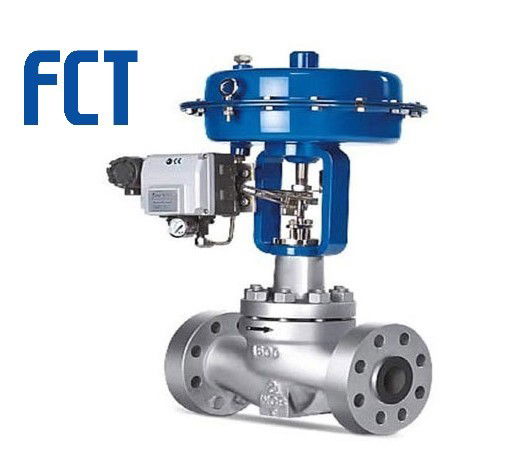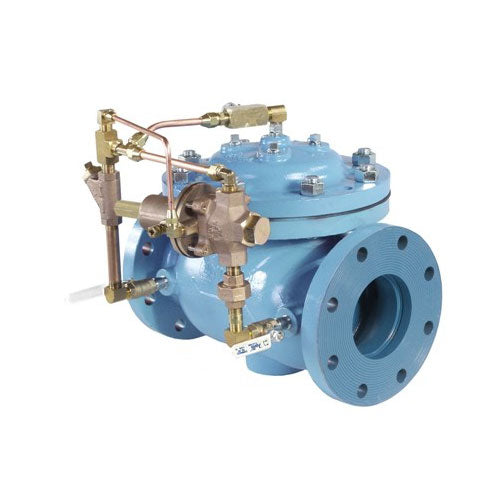Efficient Control Valves: Key Parts for Effective System Administration
Efficient Control Valves: Key Parts for Effective System Administration
Blog Article

Maximize Energy Savings and Comfort With Advanced Structure Automation Controls
In the realm of modern-day architecture and center management, the integration of advanced structure automation controls stands as a critical improvement. By using the power of automation, buildings can adapt, react, and evolve in means that were once inconceivable.
Power Effectiveness Conveniences
Power efficiency benefits can dramatically minimize energy intake and operational costs in structures. By carrying out energy-efficient methods and technologies, structure owners and drivers can accomplish significant cost savings while likewise contributing to ecological sustainability. Among the main advantages of enhancing power efficiency in buildings is the reduction of utility expenses. Energy-efficient systems, such as advanced structure automation controls, can optimize making use of sources like lights, home heating, and air conditioning, leading to reduced energy expenses gradually.
In addition, enhanced energy efficiency can lengthen the life-span of structure tools and systems. By running more effectively, a/c systems, light, and other building parts experience less wear and tear, leading to decreased maintenance and replacement prices. In addition, energy-efficient structures commonly command higher residential property values and rental prices, giving long-term monetary advantages to owners.
Furthermore, power performance can improve occupant comfort and performance. Correctly managed indoor settings with optimum lighting and thermal problems create an even more positive and favorable work space, bring about enhanced employee contentment and performance. In general, the energy effectiveness advantages related to sophisticated building automation controls are diverse, including cost savings, ecological stewardship, and passenger wellness.
Enhanced Convenience Control
Enhancing comfort control in building atmospheres needs a sophisticated combination of sophisticated automation systems for optimal passenger well-being. By making use of advanced building automation controls, centers can customize the indoor atmosphere to satisfy the certain demands and preferences of residents. control valves.
Enhanced convenience control exceeds fundamental temperature level modifications. It includes features such as tailored settings, occupancy sensing units, and natural light utilization to create a responsive and dynamic setting. By including these innovative controls, buildings can not only boost comfort yet additionally enhance power performance by maximizing system operations based upon real tenancy and use patterns. Inevitably, prioritizing owner convenience via innovative automation systems causes an extra satisfying and much healthier indoor atmosphere.
Functional Effectiveness Improvements

Moreover, the application of real-time tracking and analytics devices enables structure operators to determine energy inefficiencies and operational anomalies immediately. By constantly checking energy usage patterns and system efficiency metrics, changes can be made in real-time to maximize power usage and guarantee peak operational efficiency. control valves. Additionally, incorporating need response strategies into structure automation controls can additionally improve functional performance by dynamically adjusting energy use based on grid problems and pricing signals
Indoor Climate Optimization
Efficient interior environment optimization is a fundamental facet of structure automation controls, making certain owners' comfort and health while making best use of power cost savings. By making use of sophisticated sensors and controls, building automation systems can constantly change and keep an eye see here on temperature level, humidity degrees, air top quality, and air flow to produce an ideal indoor setting. Maintaining consistent and comfy problems not only enhances owner fulfillment but also increases performance and overall wellness.
Interior environment optimization likewise plays a vital role in energy performance. By fine-tuning heating, air conditioning, and air flow systems based on real-time data and occupancy patterns, constructing automation controls can considerably decrease energy intake - control valves. Applying approaches such as demand-controlled air flow and thermal zoning can help decrease energy waste while guaranteeing that each location of the building receives the essential conditioning.

Lasting Setting Development
Structure automation controls not just maximize indoor climate problems for power efficiency and passenger comfort but also lay the foundation for creating a sustainable atmosphere with tactical monitoring of systems and sources. By integrating innovative structure automation modern technologies, such as sensors, actuators, and smart software program, facilities can adjust and keep track of power use in real-time to lessen waste and reduce their carbon impact. These systems make it possible for predictive upkeep, recognizing possible problems before they rise and maximizing equipment efficiency to improve durability and effectiveness.
In addition, sustainable environment creation expands beyond energy management to include water preservation, waste decrease, and interior air high quality renovation. Structure automation controls can manage water use, identify leaks, and ensure proper waste disposal practices, adding to total sustainability initiatives. Furthermore, by managing and checking air flow and purification systems, these technologies boost occupant health and performance while lowering power consumption connected with heating and cooling procedures.
Verdict
Finally, progressed building automation regulates deal considerable benefits in terms of power cost savings, comfort control, operational performance, interior climate optimization, and producing a sustainable atmosphere. By implementing these controls, structures can achieve optimum efficiency while minimizing power consumption and enhancing owner convenience. It is evident that making use of innovative automation technology is essential in improving structure efficiency and producing a much more lasting future.
Power efficiency benefits can considerably reduce power intake and functional expenses in structures. In general, the power effectiveness benefits linked with innovative structure automation controls are multifaceted, incorporating expense financial savings, ecological stewardship, and passenger wellness.
Furthermore, integrating demand reaction strategies right into building automation controls can even more improve operational performance by dynamically changing energy usage based on grid conditions and prices signals.
Building automation manages not just optimize interior environment conditions for energy he said efficiency and owner comfort however additionally lay the structure for creating a sustainable setting with calculated monitoring of systems and sources.In verdict, advanced structure automation manages deal substantial advantages in terms of power savings, comfort control, functional efficiency, interior environment optimization, and creating a lasting setting.
Report this page